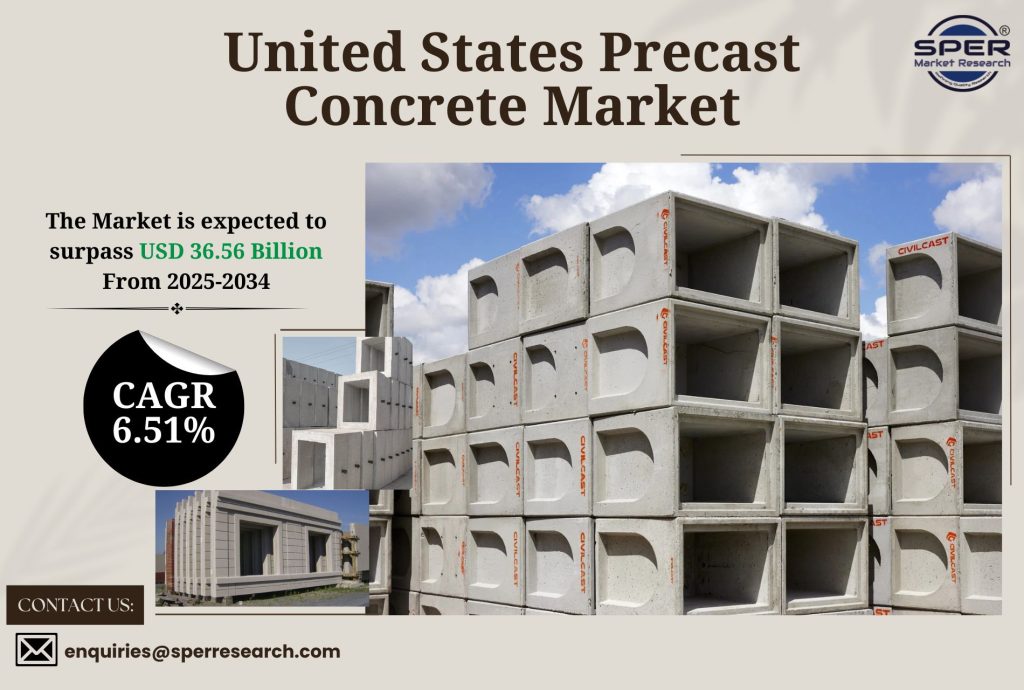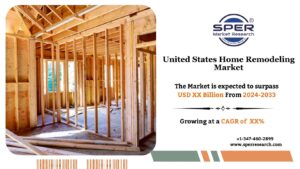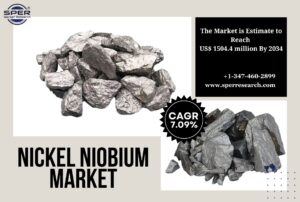United States Precast Concrete Market Revenue, Trends and Forecast 2034

Precast concrete is made by pouring concrete into a reusable mold or form, allowing it to cure in a controlled setting before being delivered to the building site to be installed. Unlike traditional cast-in-place concrete, precast elements are manufactured off-site, ensuring higher quality, durability, and precision. Common precast products include beams, slabs, walls, columns, and stairs, used across residential, commercial, and infrastructure projects. Faster construction, less labor, and less disturbance on the job site are all made possible with precast concrete. It supports modular building techniques and offers design flexibility, structural strength, and resistance to environmental factors, making it a preferred choice for modern construction needs.
According to SPER Market Research, “United States Precast Concrete Market Size- By Type, By Product, By End User- Regional Outlook, Competitive Strategies and Segment Forecast to 2034” states that United States Precast Concrete Market is estimated to reach 36.56 USD billion by 2034 with a CAGR of 6.51%.
Drivers:
The demand for faster, less expensive, and better-quality building solutions is driving the precast concrete industry. Precast elements significantly reduce on-site construction time, allowing for quicker project completion and lower labor costs. Urbanization and infrastructure development, especially in emerging economies, are fueling the need for efficient building materials like precast concrete. Its durability, resistance to weather and seismic activity, and minimal maintenance requirements make it suitable for long-term structures. The material also supports sustainable construction through reduced waste, energy efficiency, and recycling potential. Additionally, advancements in modular construction and architectural flexibility have further increased its adoption across residential, commercial, and industrial sectors, making it a cornerstone in modern construction practices.
Download a Free Report Overview Now
Restraints:
The Precast Concrete market faces several challenges despite its benefits. One of the primary issues is the high initial investment required for manufacturing facilities, molds, and transportation infrastructure, which can deter small and mid-sized builders. Transportation and logistics pose another challenge, as precast elements are often large and heavy, requiring specialized handling and limiting distance from production sites. Design flexibility, while improved, can still be restricted compared to cast-in-place concrete for highly customized projects. Skilled labor is also needed to ensure precise assembly at the construction site. Additionally, lack of awareness or preference for traditional methods in some regions can hinder adoption. Climate-related curing conditions may further impact production efficiency and costs.
Texas held the biggest revenue share in the United States Precast Concrete Market. Due to its rapid population growth, residential and commercial construction boom, and a strong presence of major precast manufacturers like Oldcastle and Tindall operating multiple plants across the state. Some of the key market players are American Precast Concrete, Inc., CEMEX, Concrete Pipe & Precast LLC, Kawneer, Metromont Corporation and NAPCO Precast LLC.
For More Information, refer to below link: –
United States Precast Concrete Market Growth
Related Reports:
Traffic Signal Controller Market Growth
Follow Us –
LinkedIn | Instagram | Facebook | Twitter
Contact Us:
Sara Lopes, Business Consultant — USA
SPER Market Research
enquiries@sperresearch.com
+1–347–460–2899








